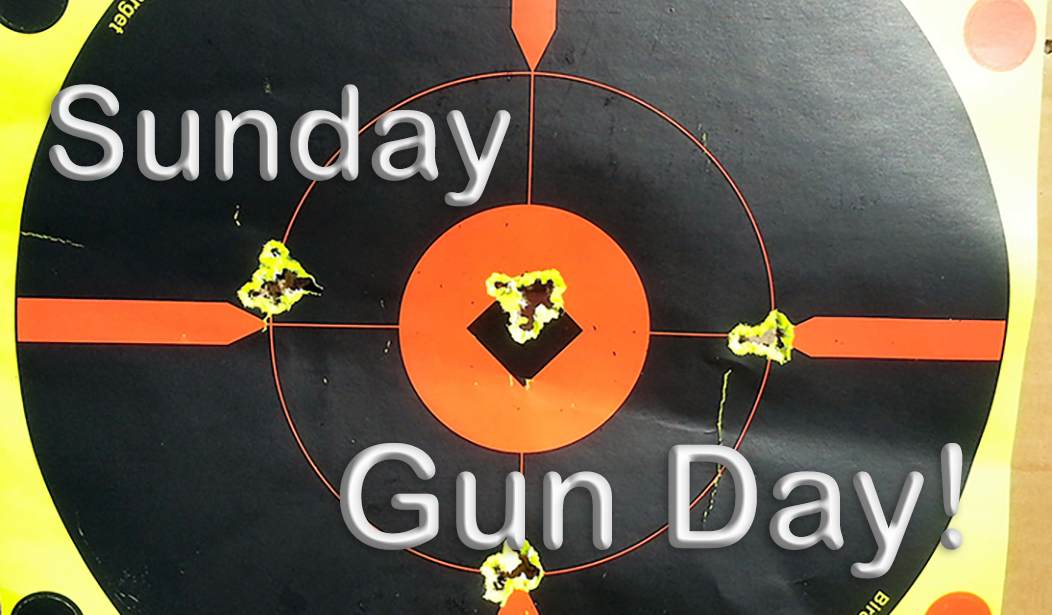Gallipoli
In World War 1, one of the Allies' major screwups was the Gallipoli campaign. The brainchild of Winston Churchill, who would redeem that decision through his World War 2 leadership of Great Britain (which still was pretty great in those days), the Gallipoli affair didn’t go at all well for the forces of the Empire, although Australian and New Zealander troops fought heroically, and thus are now recognized with ANZAC Day.
But this is a piece on guns, not military history, so I’m not going to talk about the Gallipoli campaign, other than to discuss an interesting little bit of firearms history to come out of that affair – the Drip Rifle.
Yes, there was a thing called the Drip Rifle.
William Scurry and the Drip Rifle
In that fateful year of 1915, a young Australian soldier, Private William Scurry, arrived in Gallipoli and joined the 7th Battalion, 2nd Brigade, 1st Division of the Australian Army. He arrived in November and was promoted to lance corporal in December, just in time to join the evacuation of the Empire’s troops from the peninsula.
There was a problem. The Ottoman Turks, who opposed the Aussies, were alert, and the officers in the division feared that they would lose thousands if the Turks realized the Allied troops were bugging out and charged their weakened line. This was a serious problem. But William Scurry, that young lance corporal, had an idea. He went first to his buddy, Alfred “Bunty” Lawrence, who, in addition to having one of the most Aussie nicknames ever, was also, like Scurry, a clever cobber. One can imagine the conversation between the two:
SCURRY: “Bunty, those bloody Turks over there, if they hear our firing slacking off, they’ll rush our positions, get into our trenches and give us a damn good thrashing.”
BUNTY: “True enough, William m’lad. We’re in for it.”
SCURRY: “We ought to come up with a way to make them think there are lads with rifles in our trenches.”
BUNTY: “Got an idea, have you?”
SCURRY: “I might. Have you any empty bully beef cans?”
One can imagine that there were plenty of empty bully beef cans about, that being a primary ration of the Empire’s forces at that time, so Lance Corporal Scurry and his friend Bunty, whose rank is not given in any account I’ve read, set to work. What they came up with was a novel invention that would have made Rube Goldberg proud.
Taking a good old issue Short Magazine Lee-Enfield (SMLE) or “Smelly” rifle, they propped it up on sandbags, so it was aiming more or less at the Ottoman lines. Then, they took two bully beef tins and filled one with water, which was placed above the rifle. A second tin was left empty but attached to the rifle’s trigger with a string. At the last possible moment before evacuation, the notion was that a small hole would be punched in the upper tin, which would then leak water into the lower, and, when the lower tin was heavy enough, it would pull the trigger via the string and fire the rifle.

The Drip Rifle, as it became known, worked. What’s more, the appearance of sporadic fire could be created by the simple expedient of varying the size of the hole punched in the upper can.
The two took their invention to their commander, who presumably took it to his commander, and so on; in any case, several drip rifles were set up in the Anzac lines, simulating sporadic fire from alert troops and fooling the Ottomans completely.
As a result, the evacuation went far better than expected; the Anzacs vacated their positions and were evacuated, 80,000 men in all, with only a half-dozen casualties. The British Empire could have taught some of our modern-day leaders a thing or two about how to conduct an evacuation, it seems.
See Related: Politico News Outlet Ripped to Shreds After Disgraceful Headline on 'Messy' Afghanistan Withdrawal
Then This Happened
The two sharp young cobbers who invented the drip rifle surely got a lot of back-slapping from their fellows. William Scurry was awarded a Distinguished Conduct Medal and was mentioned in dispatches. He was also promoted to sergeant. As for Bunty’s reward from the whole affair, that piece of the story remains unknown; hopefully, he was recognized for his part.
Scurry, who had done so much to ensure that the Anzac forces were able to scurry (hah) off of the Gallipoli front, was sent on to serve in Egypt, where he was later promoted to Second Lieutenant. He was then transferred to the 58th Battalion, which was on the way to France, where he commanded a mortar battery and was promoted again to Lieutenant. After the war, he married one Doris Barry, an Army nurse, and in due course, the couple had four children. Scurry re-enlisted in the Army when World War 2 broke out, ended up commanding an internment camp, was promoted to Major, and survived his second war without further incident or need for drip rifles. He had, we feel sure anyone would agree, done enough as far as the direct efforts to un-alive Germans and Ottoman Turks.
See Related: Photographs and Memories: Operation Overlord, 80 Years Later
Later…
The downside of any such subterfuge, of course, is that it necessitates leaving a certain number of rifles behind, later to fall into the hands of the enemy. But it seems that modern rifles and a few other more current devices might just take the idea of the drip rifle and give it a 21st-century makeover; after all, one should never underestimate the capability of troops to Rube Goldberg stuff up.
Imagine a similar setup to the drip rifle but with a modern piece, like the M-16 or the M-4 carbine, set to semi-auto mode. It wouldn’t be difficult to use a larger water reservoir — say a bucket — for the top container. Then, one could rig some kind of a cam so that once the bottom can is full enough to discharge the weapon, it would then dump the water and start the process over. If one was very inventive, there might even be a way to rig the top container to a thermite grenade (or just an honest old fragmentation grenade) so that when the bucket is empty, it triggers the grenade to destroy the rifle.
Soldiers are an inventive lot, and as they say, necessity is the mother of invention. But any troops attempting to create such an updated self-firing decoy rifle should first turn towards Croyden, where William Scurry is buried, and thank his ghost for coming up with the idea that saved 80,000 Anzacs from death or capture. William Scurry has, with this action alone, earned his place in Valhalla.














